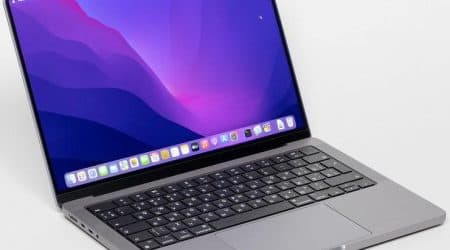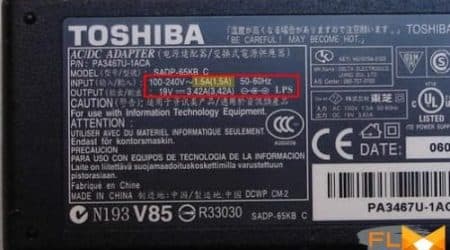In today’s digital age, sharing experiences through visual content has become essential. Whether it’s showcasing gameplay, creating tutorials, or capturing important lessons, the ability to document every detail has gained immense popularity. Thankfully, various methods are available to help facilitate this process on portable gadgets.
Users can find themselves overwhelmed with options in a market filled with applications and built-in functionalities. However, understanding the available choices and features can tremendously enhance the capturing experience. Factors such as ease of access and user-friendly interfaces make for an enjoyable experience where creativity knows no bounds.
With just a few steps, anyone can embark on their journey toward seamless content creation. The following sections will guide you through various techniques that empower individuals to transform their thoughts into captivating visual narratives.
Understanding Screen Recording on Android
The ability to capture visual activity displayed on mobile devices has become increasingly important in today’s digital landscape. This functionality allows users to create tutorials, share gameplay, or document various processes for personal or professional purposes. Many modern devices are equipped with built-in tools to facilitate this task, providing a user-friendly experience for all skill levels.
The mechanism behind capturing ongoing interactions involves a combination of software and hardware resources within the device. The process typically captures audio and video simultaneously, allowing for comprehensive content creation. Users can customize settings to enhance their captures, including resolution, frame rate, and audio sources, which contributes to a personalized output tailored to their needs.
Moreover, numerous applications available on app stores can extend the functionality for more advanced users looking for specific features. From editing options to streaming capabilities, these tools cater to a wide array of use cases. Understanding the nuances of this feature can significantly enhance one’s ability to produce high-quality multimedia content directly from their mobile device.
Built-in Features for Screen Capture
Modern devices come equipped with functionalities that simplify the process of capturing what’s displayed on the interface. These options allow users to quickly document activities, whether for sharing, teaching, or troubleshooting purposes. With just a few taps, anyone can obtain a visual representation of their interactions.
Accessing the Capture Tool
Many smartphones feature an intuitive shortcut for initiating the capture process. Typically, this can be found through a combination of buttons or within the notification panel. Users are encouraged to explore their device settings, as this functionality varies across different models. Once located, accessing this tool opens up a world of possibilities for content creation and sharing.
Editing and Sharing Options
After capturing a moment, various editing tools are often at one’s disposal. Users may crop, annotate, or modify the image before distributing it. This flexibility enhances the overall experience, enabling individuals to tailor their captures to specific needs. Additionally, seamless sharing options ensure that the finalized product can be swiftly sent to friends or colleagues.
Top Apps for Advanced Recording
For those seeking enhanced functionalities beyond standard capabilities, a selection of applications exists that cater to more sophisticated needs in capturing content. These tools offer a variety of features, enabling users to create high-quality videos while accommodating diverse preferences and requirements.
AZ Screen Recorder is a popular choice among enthusiasts due to its user-friendly interface and robust suite of features. It allows users to capture high-definition video without watermarking, provides options for live streaming, and even includes editing tools for post-production adjustments.
Mobizen stands out for its versatility. This application not only supports HD quality but also includes a facecam option, enabling users to overlay their reactions while demonstrating apps or games. Additionally, it offers various editing functions to enhance the final output.
DU Recorder is notable for its wealth of features, including the ability to record in different resolutions and frame rates. Users can access comprehensive editing tools, which help in producing professional-looking videos directly from their devices.
Screen Recorder – No Ads is a minimalist option that prioritizes a clutter-free user experience. As the name suggests, this app is devoid of advertisements, allowing for an uninterrupted capturing experience without distractions.
Exploring these applications empowers users to tailor their capturing processes to meet specific needs, ensuring that every important moment is preserved with quality and precision.
Tips for Optimal Recording Quality
Achieving superior output requires a combination of settings and preparation. Attention to detail during the setup phase ensures that the final product meets expectations and is visually compelling.
Adjust Settings Wisely
Modify the resolution and frame rate options to suit the intended use. Higher resolutions provide crisper visuals, while an appropriate frame rate contributes to smoother movements. Striking a balance between quality and file size is essential, so assess the capabilities of the device before finalizing choices.
Minimize Disruptions
Disable notifications and alerts before initiating a session. This step prevents interruptions from interfering with the performance. Additionally, ensure that sufficient storage space is available; a cluttered device can unexpectedly halt the process. Employ a stable network connection when necessary to enhance both quality and efficiency.
Remember to conduct a test run prior to the actual attempt, allowing for adjustments in lighting, sound, and framing. This approach fosters a polished finish that enhances viewer engagement and satisfaction.
Editing Your Screen Recordings Easily
Enhancing visual content can significantly improve its appeal and effectiveness. Various tools and applications are available for refining footage, allowing users to cut unnecessary segments, add annotations, and incorporate background music. This ensures that the final output meets personal standards and effectively communicates the intended message.
Trimming unnecessary parts is often one of the first steps in the enhancement process. By removing awkward pauses or irrelevant sections, you can create a more concise and engaging presentation. Several applications offer intuitive interfaces for achieving this, allowing for precise adjustments.
Adding text overlays can also enhance comprehension. Whether it’s providing context or emphasizing key points, incorporating text can guide viewers and make important information stand out. Various font styles and colors enable personalization, ensuring the overlays align with the overall aesthetic of the content.
Incorporating music or sound effects can elevate the emotional impact of the footage. Selecting suitable audio tracks can complement visuals, enhancing the viewer’s experience. Many editing tools provide a library of royalty-free sounds, making it easy to find the perfect accompaniment.
Finally, exporting and sharing the edited content is a crucial step. Most applications facilitate direct sharing to popular platforms, ensuring your polished creation reaches the intended audience without hassle. The ability to export in various formats allows for compatibility with different devices and services.
Sharing Your Content Successfully
Once you have captured your visual material, the next step is to distribute it effectively. It is essential to consider various platforms and methods for sharing to ensure maximum reach and engagement with your audience. A strategic approach can significantly enhance visibility and foster interaction.
Choose the Right Platform: Each social media or distribution channel has its unique characteristics. Selecting a suitable platform for your content can make a considerable difference. For instance, video-sharing sites are ideal for dynamic content, while forums may be better for tutorials or guides.
Engage Your Audience: Interactivity plays a crucial role in how well your material is received. Encourage viewers to share their thoughts, ask questions, or participate in discussions. Through engagement, you create a sense of community around your content.
Optimize Descriptions and Tags: Properly labeling and describing your content helps in making it discoverable. Use relevant keywords and tags that resonate with your target audience, as this enhances searchability and attracts more viewers.
Evaluate Feedback: Gathering insights from your audience provides valuable information that can guide future content creation. Pay attention to comments, shares, and likes, as these metrics reflect how well your material is resonating with viewers.
Troubleshooting Common Recording Issues
When attempting to capture visuals from a mobile device, various complications may arise. Understanding these challenges and identifying their solutions can enhance the overall user experience, enabling seamless capturing at any moment.
Insufficient Storage Space
A frequent obstacle is the lack of available storage. If the device is nearly full, new captures are likely to fail. To remedy this situation, users should:
- Check the storage settings to evaluate available space.
- Delete unnecessary files or previously captured content.
- Consider transferring important data to cloud storage or external devices.
Application Crashes or Freezes
Another common issue pertains to the application becoming unresponsive. This can disrupt the capturing process. Solutions include:
- Restarting the application to refresh its functioning.
- Ensuring the latest version of the software is installed.
- Clearing the cache of the application through settings.
Timely troubleshooting of these issues can significantly improve the usability of capturing visuals, allowing for a more productive experience.
Q&A: How to record the screen on your android phone
How can you record your screen on an Android device using the built-in screen recorder?
To record your screen on an Android device using the built-in screen recorder, swipe down from the top of your screen to open the Quick Settings menu. Look for the “Screen recorder” icon, and if you don’t see it, you may need to add the screen recorder option to your Quick Settings. Once found, tap the screen recorder icon, decide whether you want to record audio and show touches on the screen, then tap the record button to start recording. This feature is available on devices running Android 11 or later.
What are the options for recording your screen on an older version of Android?
If you are using an older version of Android that doesn’t have a built-in screen recording tool, you can download a third-party screen recording app from the Google Play Store. Popular screen recording apps like AZ Screen Recorder or ADV Screen Recorder allow you to record your screen with additional features such as recording audio and showing touches on the screen. These apps are free to use and can be found by searching in the Google Play Store.
How can you record audio while using the screen recording feature on an Android phone or tablet?
When using the screen recording feature on an Android phone or tablet, you can choose to record audio along with your screen. After tapping the screen recorder icon, a pop-up will ask if you want to record audio. Select the option to record internal audio, microphone audio, or both. Once you’ve made your selection, tap the record button to start capturing your screen with the audio included. This feature is available on Android 11 or later, or via third-party apps for older devices.
What is the best way to record your Android screen if your phone doesn’t have a built-in screen recorder?
If your Android phone doesn’t have a built-in screen recorder, the best way to record your screen is by downloading a third-party screen recording app from the Google Play Store. Apps like AZ Screen Recorder or Google Play Games allow you to record your screen with additional features like drawing on the screen or capturing touches. These apps are popular among Android users and can be easily installed on most devices. They also allow you to record audio and control video quality settings.
How do you record your screen on Android using the built-in screen recorder?
To record your screen on Android using the built-in screen recorder, swipe down from the top of the screen to open the Quick Settings menu. Look for the screen recorder icon, and if it’s not visible, drag the screen down further to expand the options. Tap the screen recorder icon, select whether to record audio, and start recording. This built-in tool is available on modern Android versions, such as Android 11 or later.
How can you record a video on an older Android device without a native screen recording tool?
If your Android device doesn’t have a native screen recording tool, you can download an app to record your screen, such as AZ Screen Recorder, which is free on the Google Play Store. After installing the app, open it and follow the instructions to begin recording your screen. This option is ideal for older Android devices that lack the built-in screen recording feature.
What steps should you follow to screen record on your Android phone and stop the recording?
To screen record on your Android phone, swipe down from the top of the screen, find the screen recorder icon, and tap it to begin recording. Once you’re done, you can stop the recording by swiping down again to view the screen recorder notification at the top of the screen and tapping “Stop.” The recording will automatically save to your phone.
How can you find and use a screen recorder app if your Android version doesn’t support built-in screen recording?
If your Android version doesn’t support built-in screen recording, you can download a third-party screen recorder app from the Google Play Store. Apps like AZ Screen Recorder are popular and easy to use. Simply open the app, follow the prompts, and tap the record icon to start recording. Once finished, you can stop the recording from the app or notification panel. These apps provide a seamless way to record your screen on an Android phone.





